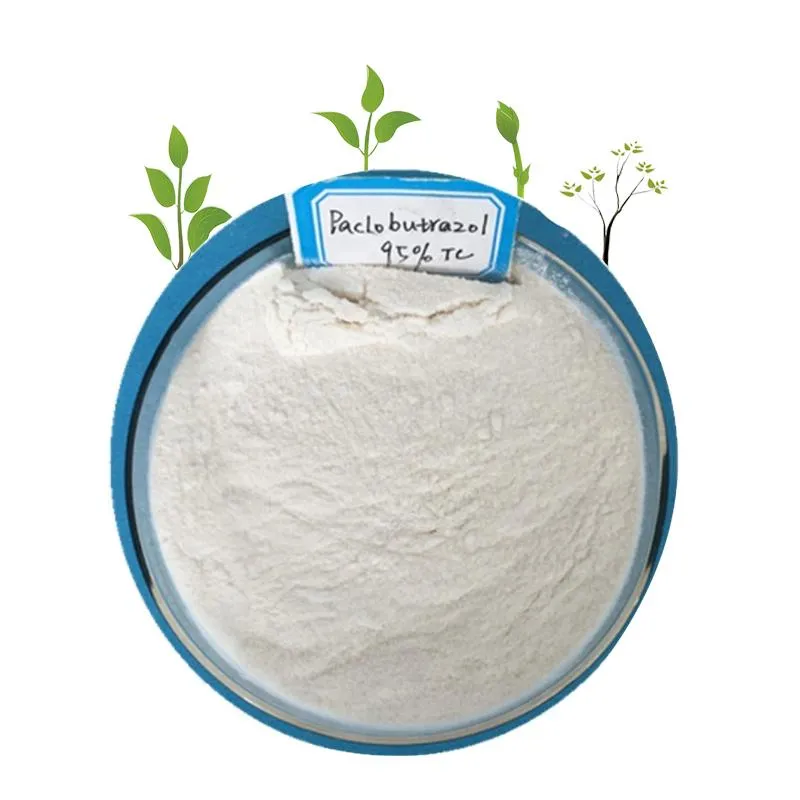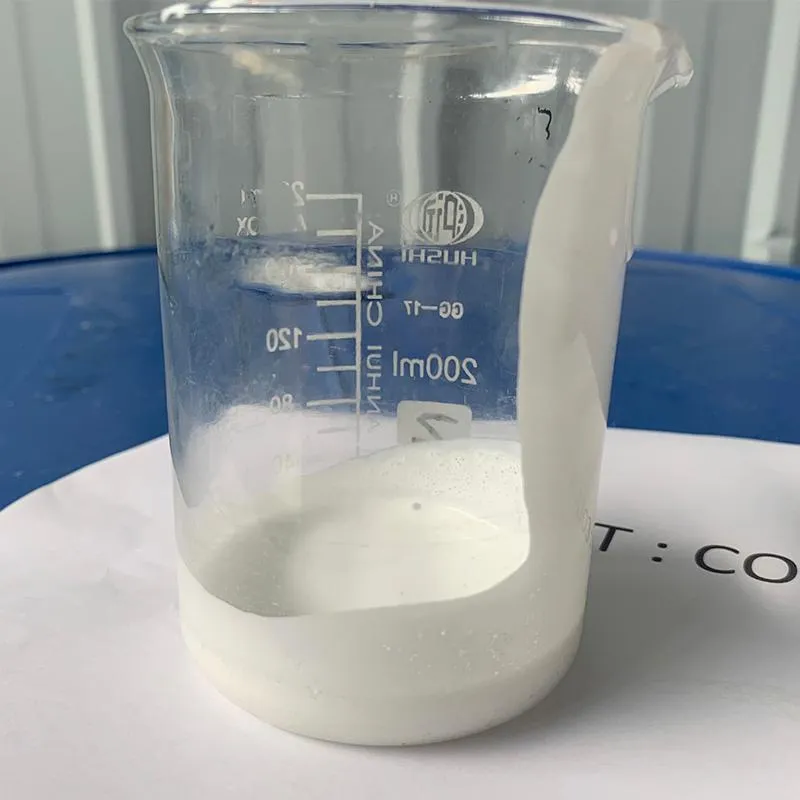Which PGRs Are in the Group of Paclobutrazol?
What Group Does Paclobutrazol Belong To?
Paclobutrazol is a widely used triazole-type plant growth regulator (PGR) that functions primarily as a gibberellin biosynthesis inhibitor. By targeting specific enzymes in the gibberellin synthesis pathway, particularly ent-kaurene oxidase, paclobutrazol effectively suppresses stem elongation, shortens internodes, and enhances root development without compromising overall plant health.
This regulatory function places paclobutrazol in the chemical class of triazole growth retardants, which are known for their systemic activity, long residual effect, and broad usage across horticulture, fruit trees, turfgrass, and ornamental plants. These compounds share not only structural similarities but also a common mechanism of action, making them suitable for comparison and potential substitution under the right agronomic conditions.
Understanding the classification of paclobutrazol is essential for identifying related PGRs that offer similar benefits—either for rotation, combination, or formulation design.
Triazole-Type Growth Retardants: A Distinct Class of PGRs
Triazole-type growth retardants are a specialized class of plant growth regulators characterized by their triazole chemical structure and their ability to inhibit gibberellin biosynthesis. The core feature that unites these compounds is their interference with the cytochrome P450 monooxygenase system, particularly the ent-kaurene oxidase enzyme, which is crucial in the early steps of gibberellin formation.
By blocking this enzyme, triazole PGRs prevent excessive stem elongation, promote compact plant architecture, and improve stress tolerance—making them essential tools in agronomic, horticultural, and landscape management systems. Compared to other classes like acylcyclohexanediones or morphactins, triazoles tend to offer longer residual activity, better xylem mobility, and more consistent results across diverse species.
This class includes several key compounds beyond paclobutrazol, such as uniconazole, flurprimidol, tebuconazole (dual-function PGR and fungicide), and ancymidol. Each has subtle differences in potency, spectrum, and crop specificity, but they all function within the same inhibitory pathway, making them part of the broader paclobutrazol-related group.
PGRs Related to Paclobutrazol
Several plant growth regulators are structurally and functionally related to paclobutrazol, all of which fall under the triazole class and share the common trait of gibberellin biosynthesis inhibition. These compounds are often used in similar agronomic and horticultural settings, offering growers flexibility in product choice and strategy. Here are the key examples:
- Uniconazole
A close analog to paclobutrazol, uniconazole is more potent at lower concentrations and often preferred in high-value ornamental crops where precise growth control is required. It has faster uptake and stronger growth-suppressing effects. - Flurprimidol
Commonly used in turfgrass and landscape ornamentals, flurprimidol offers a balance between efficacy and longevity. Its activity is similar to paclobutrazol, but with a slightly shorter residual effect. - Tebuconazole
While primarily used as a fungicide, tebuconazole also exhibits plant growth-regulating effects due to its triazole structure. It is sometimes leveraged for dual action in crops like cereals and turfgrass. - Ancymidol
An older generation PGR with triazole characteristics, ancymidol is used less frequently today but still relevant in greenhouse applications for dwarfing ornamental plants.
These related PGRs offer overlapping benefits with paclobutrazol, yet differ in application spectrum, rate of uptake, residual persistence, and crop specificity. Understanding their distinctions is essential for optimizing treatment plans, especially when targeting specific crop types or production systems.
| PGR Name | Primary Use | Potency vs. Paclobutrazol | Common Crops | Residual Activity |
|---|---|---|---|---|
| Uniconazole | Ornamentals | Higher | Flowers, bonsai | Long |
| Flurprimidol | Turf, Ornamentals | Moderate | Turfgrass, nurseries | Moderate |
| Tebuconazole | Fungicide + PGR | Lower | Cereals, turfgrass | Variable |
| Ancymidol | Greenhouse Dwarfing | Lower | Potted ornamentals | Short |
Paclobutrazol vs. Related PGRs: Practical Comparison
Choosing the right plant growth regulator depends on several factors—crop type, application environment, growth suppression goals, and formulation preferences. Below is a side-by-side comparison of paclobutrazol and its most relevant triazole-type counterparts, helping you identify which PGR best fits your agronomic program.
| Feature / Parameter | Paclobutrazol | Uniconazole | Flurprimidol | Tebuconazole |
|---|---|---|---|---|
| Chemical Class | Triazole | Triazole | Triazole | Triazole |
| Primary Function | Gibberellin Inhibitor | Gibberellin Inhibitor | Gibberellin Inhibitor | Fungicide + PGR |
| Potency | Moderate | High | Moderate | Low (as PGR) |
| Systemic Activity | Yes (xylem-mobile) | Yes | Yes | Limited |
| Residual Effect | Long | Very Long | Medium | Short to Medium |
| Common Applications | Fruit trees, turf, ornamentals | Ornamentals, bonsai, crops | Turfgrass, ornamentals | Cereal fungicide programs |
| Formulation Types | SC, WP, GR | SL, WP | SC, WP | SC, EC |
| Crop Selectivity | Broad | Narrower | Moderate | Broad |
This table illustrates the core differences and strategic overlaps between these PGRs. While all belong to the triazole class and act by suppressing gibberellin synthesis, paclobutrazol strikes a balance between longevity, potency, and versatility—making it a go-to option in many fruit and turf systems.
Choosing the Right PGR: Key Considerations for Growers
Selecting the most suitable PGR from the paclobutrazol-related group involves more than just chemical similarity—you must consider your target crop, production environment, regulatory limits, and desired outcomes. Here are several practical factors that influence decision-making:
- Crop Sensitivity and Label Approval
Some PGRs, like uniconazole, may be too potent for sensitive ornamentals if not carefully dosed, while others, such as paclobutrazol, offer broader crop tolerance and more registered uses globally. - Application Method and Frequency
Paclobutrazol and flurprimidol are typically applied via soil drench or trunk injection for long-term growth suppression. Uniconazole is more often used in foliar sprays or dip treatments, especially in greenhouse environments. - Regulatory Status and MRLs
Export crops must comply with maximum residue limits (MRLs), which vary by country and active ingredient. Paclobutrazol generally has well-established tolerances, while others may require case-by-case evaluation. - Desired Duration of Effect
Need long-term suppression? Paclobutrazol and uniconazole are more persistent than flurprimidol or tebuconazole. Shorter cycles may benefit from faster-degrading compounds. - Tank Mix Flexibility
In integrated programs, it’s important to know whether the PGR can be safely tank mixed with fertilizers, fungicides, or insecticides. Most triazole PGRs are chemically stable, but compatibility testing is always recommended.
By aligning these factors with your crop goals, market access, and environmental conditions, you can maximize the performance of growth regulators while ensuring compliance and efficiency.
Conclusion: Streamlining Growth Control with PGR Selection
Understanding which PGRs fall under the same functional umbrella as paclobutrazol gives you a clearer path to optimizing plant growth, improving crop uniformity, and reducing input costs. While all triazole-type regulators operate by suppressing gibberellin biosynthesis, their field behavior, formulation types, and crop fit vary significantly.
Paclobutrazol remains the most versatile and widely adopted option, especially for fruit trees, turfgrass, and landscaping. However, in controlled environments or for specialty crops, uniconazole or flurprimidol may offer more precision or faster uptake. Tebuconazole, though milder as a growth suppressant, may serve well in dual-role programs where fungicidal protection is also needed.
For growers, landscape managers, and agricultural distributors, the key is to match each compound to your production system’s needs. With proper knowledge of chemical class, field performance, and label scope, you can streamline your PGR program while ensuring regulatory compliance and long-term plant health.
What Group Does Paclobutrazol Belong To?
Paclobutrazol is a widely used triazole-type plant growth regulator (PGR) that functions primarily as a gibberellin biosynthesis inhibitor. By targeting specific enzymes in the gibberellin synthesis pathway, particularly ent-kaurene oxidase, paclobutrazol effectively suppresses stem elongation, shortens internodes, and enhances root development without compromising overall plant health.
This regulatory function places paclobutrazol in the chemical class of triazole growth retardants, which are known for their systemic activity, long residual effect, and broad usage across horticulture, fruit trees, turfgrass, and ornamental plants. These compounds share not only structural similarities but also a common mechanism of action, making them suitable for comparison and potential substitution under the right agronomic conditions.
Understanding the classification of paclobutrazol is essential for identifying related PGRs that offer similar benefits—either for rotation, combination, or formulation design.
Triazole-Type Growth Retardants: A Distinct Class of PGRs
Triazole-type growth retardants are a specialized class of plant growth regulators characterized by their triazole chemical structure and their ability to inhibit gibberellin biosynthesis. The core feature that unites these compounds is their interference with the cytochrome P450 monooxygenase system, particularly the ent-kaurene oxidase enzyme, which is crucial in the early steps of gibberellin formation.
By blocking this enzyme, triazole PGRs prevent excessive stem elongation, promote compact plant architecture, and improve stress tolerance—making them essential tools in agronomic, horticultural, and landscape management systems. Compared to other classes like acylcyclohexanediones or morphactins, triazoles tend to offer longer residual activity, better xylem mobility, and more consistent results across diverse species.
This class includes several key compounds beyond paclobutrazol, such as uniconazole, flurprimidol, tebuconazole (dual-function PGR and fungicide), and ancymidol. Each has subtle differences in potency, spectrum, and crop specificity, but they all function within the same inhibitory pathway, making them part of the broader paclobutrazol-related group.
PGRs Related to Paclobutrazol
Several plant growth regulators are structurally and functionally related to paclobutrazol, all of which fall under the triazole class and share the common trait of gibberellin biosynthesis inhibition. These compounds are often used in similar agronomic and horticultural settings, offering growers flexibility in product choice and strategy. Here are the key examples:
- Uniconazole
A close analog to paclobutrazol, uniconazole is more potent at lower concentrations and often preferred in high-value ornamental crops where precise growth control is required. It has faster uptake and stronger growth-suppressing effects. - Flurprimidol
Commonly used in turfgrass and landscape ornamentals, flurprimidol offers a balance between efficacy and longevity. Its activity is similar to paclobutrazol, but with a slightly shorter residual effect. - Tebuconazole
While primarily used as a fungicide, tebuconazole also exhibits plant growth-regulating effects due to its triazole structure. It is sometimes leveraged for dual action in crops like cereals and turfgrass. - Ancymidol
An older generation PGR with triazole characteristics, ancymidol is used less frequently today but still relevant in greenhouse applications for dwarfing ornamental plants.
These related PGRs offer overlapping benefits with paclobutrazol, yet differ in application spectrum, rate of uptake, residual persistence, and crop specificity. Understanding their distinctions is essential for optimizing treatment plans, especially when targeting specific crop types or production systems.
| PGR Name | Primary Use | Potency vs. Paclobutrazol | Common Crops | Residual Activity |
|---|---|---|---|---|
| Uniconazole | Ornamentals | Higher | Flowers, bonsai | Long |
| Flurprimidol | Turf, Ornamentals | Moderate | Turfgrass, nurseries | Moderate |
| Tebuconazole | Fungicide + PGR | Lower | Cereals, turfgrass | Variable |
| Ancymidol | Greenhouse Dwarfing | Lower | Potted ornamentals | Short |
Paclobutrazol vs. Related PGRs: Practical Comparison
Choosing the right plant growth regulator depends on several factors—crop type, application environment, growth suppression goals, and formulation preferences. Below is a side-by-side comparison of paclobutrazol and its most relevant triazole-type counterparts, helping you identify which PGR best fits your agronomic program.
| Feature / Parameter | Paclobutrazol | Uniconazole | Flurprimidol | Tebuconazole |
|---|---|---|---|---|
| Chemical Class | Triazole | Triazole | Triazole | Triazole |
| Primary Function | Gibberellin Inhibitor | Gibberellin Inhibitor | Gibberellin Inhibitor | Fungicide + PGR |
| Potency | Moderate | High | Moderate | Low (as PGR) |
| Systemic Activity | Yes (xylem-mobile) | Yes | Yes | Limited |
| Residual Effect | Long | Very Long | Medium | Short to Medium |
| Common Applications | Fruit trees, turf, ornamentals | Ornamentals, bonsai, crops | Turfgrass, ornamentals | Cereal fungicide programs |
| Formulation Types | SC, WP, GR | SL, WP | SC, WP | SC, EC |
| Crop Selectivity | Broad | Narrower | Moderate | Broad |
This table illustrates the core differences and strategic overlaps between these PGRs. While all belong to the triazole class and act by suppressing gibberellin synthesis, paclobutrazol strikes a balance between longevity, potency, and versatility—making it a go-to option in many fruit and turf systems.
Choosing the Right PGR: Key Considerations for Growers
Selecting the most suitable PGR from the paclobutrazol-related group involves more than just chemical similarity—you must consider your target crop, production environment, regulatory limits, and desired outcomes. Here are several practical factors that influence decision-making:
- Crop Sensitivity and Label Approval
Some PGRs, like uniconazole, may be too potent for sensitive ornamentals if not carefully dosed, while others, such as paclobutrazol, offer broader crop tolerance and more registered uses globally. - Application Method and Frequency
Paclobutrazol and flurprimidol are typically applied via soil drench or trunk injection for long-term growth suppression. Uniconazole is more often used in foliar sprays or dip treatments, especially in greenhouse environments. - Regulatory Status and MRLs
Export crops must comply with maximum residue limits (MRLs), which vary by country and active ingredient. Paclobutrazol generally has well-established tolerances, while others may require case-by-case evaluation. - Desired Duration of Effect
Need long-term suppression? Paclobutrazol and uniconazole are more persistent than flurprimidol or tebuconazole. Shorter cycles may benefit from faster-degrading compounds. - Tank Mix Flexibility
In integrated programs, it’s important to know whether the PGR can be safely tank mixed with fertilizers, fungicides, or insecticides. Most triazole PGRs are chemically stable, but compatibility testing is always recommended.
By aligning these factors with your crop goals, market access, and environmental conditions, you can maximize the performance of growth regulators while ensuring compliance and efficiency.
Conclusion: Streamlining Growth Control with PGR Selection
Understanding which PGRs fall under the same functional umbrella as paclobutrazol gives you a clearer path to optimizing plant growth, improving crop uniformity, and reducing input costs. While all triazole-type regulators operate by suppressing gibberellin biosynthesis, their field behavior, formulation types, and crop fit vary significantly.
Paclobutrazol remains the most versatile and widely adopted option, especially for fruit trees, turfgrass, and landscaping. However, in controlled environments or for specialty crops, uniconazole or flurprimidol may offer more precision or faster uptake. Tebuconazole, though milder as a growth suppressant, may serve well in dual-role programs where fungicidal protection is also needed.
For growers, landscape managers, and agricultural distributors, the key is to match each compound to your production system’s needs. With proper knowledge of chemical class, field performance, and label scope, you can streamline your PGR program while ensuring regulatory compliance and long-term plant health.






